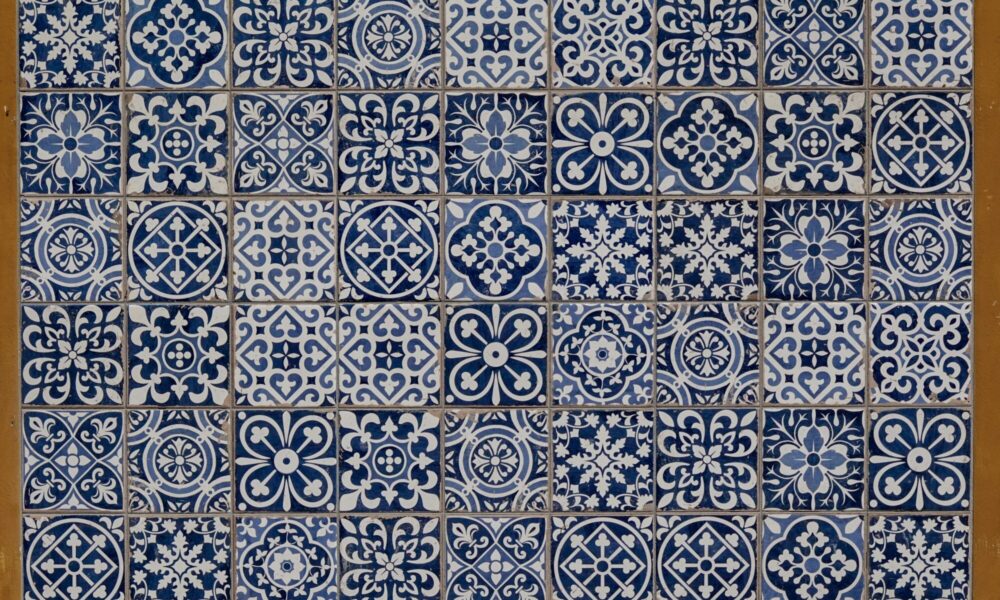The art of Italian tile design: how patterns and textures elevate your space

Italian porcelain tiles are far more than just a surface covering – they are a creative expression, a design tool, and a defining element of contemporary interiors. Italy’s long-standing ceramic tradition, combined with constant innovation, has elevated tile design into a true art form. Today, patterns and textures play a fundamental role in shaping spaces, adding depth, personality and a distinct flair to residential and commercial interiors alike.
Patterns that shape perception: from geometry to artistic motifs
From classical motifs inspired by Renaissance frescoes to bold geometric arrangements drawn from modern architecture and fashion, patterns in Italian porcelain tiles are rich in visual language. They do more than decorate, they define space, influence perception, and set the tone of an interior.
Geometric patterns, whether repetitive or asymmetric, can elongate a room, draw the eye across a surface, or create dynamic focal points. Tiles featuring interwoven lines or stylised florals introduce rhythm and movement to static surfaces, while patchwork or encaustic-inspired designs add historical depth with a contemporary twist.
Patterns also allow designers and homeowners to subtly separate areas within open-plan spaces – such as delineating a dining zone from a living area – without the need for partitions. With the right pattern, a floor or wall can become a design statement, blending seamlessly with the overall aesthetic while elevating the mood and ambience of the space.
The power of texture: surfaces you can feel
Texture brings a sensory richness to tile design that goes beyond the visual. Italian tiles are available in a wide range of surface finishes, from glossy and highly polished to matt, structured, soft-touch, and even leather- or fabric-inspired textures.
These tactile qualities enhance the perception of depth and dimension. Structured surfaces, for instance, catch the light differently depending on the time of day or the angle of illumination, adding subtle visual interest. Matt or honed textures can soften light reflection and create a calm, understated elegance, ideal for minimal or Nordic-style interiors.
In modern tile design, texture is not only decorative – it serves a functional purpose too. Anti-slip surfaces, for example, ensure safety in wet areas such as bathrooms and outdoor spaces, while still contributing to the overall design vision. The combination of different textures within a single room – smooth walls paired with structured flooring, for example – adds complexity and a curated sense of style.
Harmony and contrast: curating spaces with design coherence
Combining patterns and textures successfully requires a careful balance of visual weight, colour harmony, and spatial awareness. Italian tile collections are often designed to be mixed and matched, making it easier to create cohesive yet varied interiors.
Neutral tiles with subtle textural details can act as a base for more expressive patterned accents – on a feature wall, a fireplace surround, or a hallway floor. Conversely, bold patterns benefit from being paired with quieter, textural surfaces that allow them to stand out without overwhelming the space.
By thoughtfully integrating pattern and texture, designers can create environments that feel both dynamic and harmonious. Contrast becomes a design tool, allowing different materials and surfaces to enhance each other.
Italian creativity meets technical innovation
Behind the aesthetic appeal of Italian tiles lies state-of-the-art technology. Digital printing allows for ultra-precise reproduction of motifs and images, while advanced moulding techniques create realistic textures with tactile authenticity. Many surfaces also incorporate 3D elements that heighten the sensory impact.
This seamless blend of artistry and engineering defines the Italian approach to tile design: beautiful, functional, and enduring. With their ability to transform any room – through pattern, texture, or both – Italian porcelain tiles are not just materials, but instruments of design that elevate the everyday into the exceptional.
Ceramiche Refin: where surface design becomes architectural expression
For Ceramiche Refin, porcelain stoneware is not just a surface, it’s a medium for architectural storytelling. With over 60 years of experience and part of the internationally renowned Concorde Group, the company represents one of the leading voices in Italian ceramic design. Its mission combines beauty, performance, and cultural depth, offering surfaces that enhance both residential and commercial interiors.
Every collection is born from an in-depth design process where raw material becomes language. Natural inspirations – stone, wood, marble – are reinterpreted through contemporary aesthetics and transformed into expressive surfaces that interact with light, texture and space. Pattern and structure are never merely decorative: they shape perception, add rhythm, and support the design intent behind each environment.
This vision is embodied in NAMIB, a collection inspired by one of the world’s most ancient deserts. Its rich textures, warm hues and mineral nuances capture the silent strength of natural landscapes, bringing organic elegance into contemporary interiors.
MOON takes a more ethereal approach. Evoking lunar terrain, it blends essential stone graphics with iridescent effects that react to ambient light. The tonal range – Shine, Glow, Eclipse, Twilight and Dark – creates changing moods throughout the day, offering an ideal surface for those seeking both visual impact and design harmony.
Completing this triad is RELIEFS, a striking 3D wall tile project that redefines vertical surfaces. With six refined textures – from herringbone to vertical flutes and hammered lines – the collection turns light and shadow into design elements, adding architectural depth and tactile complexity to interiors.
Driven by a strong Made in Italy ethos and a deep-rooted sense of responsibility, Ceramiche Refin continues to set new standards in ceramic design, where form, material and concept merge to elevate the language of space.

Source: The art of Italian tile design: how patterns and textures elevate your space




